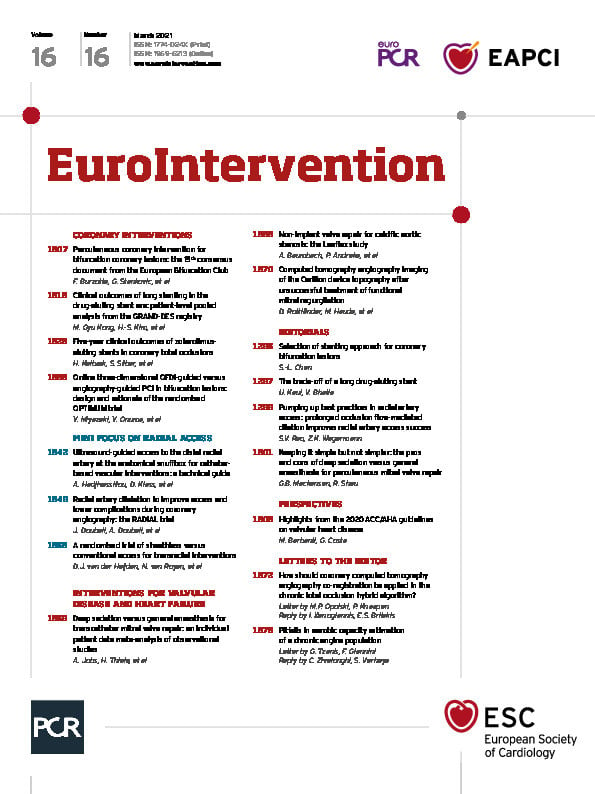
The study by Zivelonghi et al1 evaluated for the first time the effect of the coronary sinus reducer (CSR) in the exercise capacity of patients with chronic angina. Patients’ peak oxygen uptake (VO2peak) increased by 11%, six months after CSR implantation, suggesting a possible reduction of myocardial ischaemia. Indeed, we have recently demonstrated in a stress cardiac magnetic resonance (CMR)-based study that CSR decreased the ischaemic burden, providing a physiological rationale underlying its efficacy2. However, there are some concerns that should be taken into account to evaluate the results of this study.
Cardiopulmonary exercise test (CPET) represents the gold standard for exercise capacity estimation as it thoroughly evaluates the systems involved in exercise limitation and the interactions between them. During CPET, patients are expected to exercise until exhaustion to assess the maximal exercise capacity. When a patient suffers from angina, the test becomes “angina-limited”. CPET can still evaluate components of the exercise capacity, but the VO2peak does not reflect the maximum cardiorespiratory fitness but rather the oxygen uptake at the time of onset of angina.
The population of this study consists of patients with chronic angina, refractory to medical treatment. CCS angina class was significantly reduced at six months of follow-up (73% of the patients had CCS angina class III-IV at baseline CPET, while at the follow-up CPET 19% of the patients were in CCS class III and none were in class IV). The symptomatic relief after CSR could “increase” patients’ VO2peak, even without exercise capacity improvement, simply because patients exercised for more time due to lack of angina. The application of CPET only to determine VO2peak (as is commonly done in clinical practice) fails to employ this test for its unique capability, to define the pathophysiology of exercise limitation.
Other markers of CPET3 (e.g., O2-pulse, O2-pulse flattening duration, HR-VO2 uptake and ∆VO2/∆WR slope, and recovery kinetics parameters) that are not affected by the premature exercise limitation from angina could provide more robust information for this specific population.
CSR has been found to decrease ischaemia burden2. This finding itself could partially explain aerobic capacity improvement; however, angina perception is a major co-founding parameter for premature exercise limitation and for the evaluation of the results of this study.
In light of these considerations, we want to highlight the role of CPET to evaluate the aerobic capacity of patients with chronic angina by also evaluating other submaximal parameters of CPET.
Conflict of interest statement
F. Giannini is a consultant for Neovasc. G. Tzanis has no conflicts of interest to declare.
Supplementary data
To read the full content of this article, please download the PDF.

